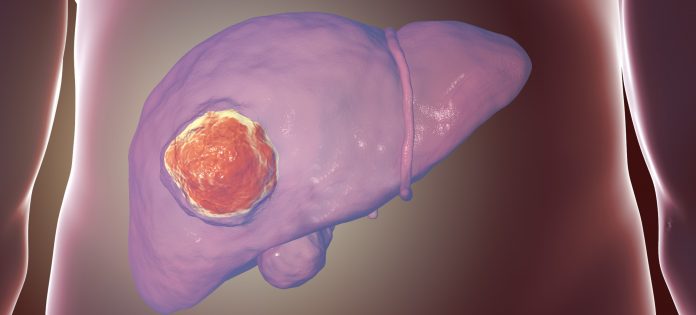
A recent study presented at the 36th EORTC-NCI-AACR Symposium on Molecular Targets and Cancer Therapeutics in Barcelona, Spain revealed that WNTinib, a small molecule kinase inhibitor, can delay tumor growth and improve survival rates in hepatoblastoma, a rare liver cancer most frequently seen in children under three years old. There are approximately 1.8 cases per million children each year, but incidence rates are increasing. Treatment options are usually surgery and chemotherapy that often come with severe side effects.
“The side effects of chemotherapy can have an especially large impact on children who are treated at an early age. This highlights the urgent need for new and more effective drugs that are better tolerated by pediatric patients,” said Ugne Balaseviciute, a pre-doctoral researcher in the Translational Research in the Hepatic Oncology Group at Institut D’Investigacions Biomediques August Pi i Sunyer (IDIBAPS) Barcelona, Spain. Life-long side effects of current treatments include hearing loss and heart problems.
WNTinib targets a genetic mutation known as CTNNB1, found in about 90% of hepatoblastoma cases. This mutation complicates treatment options, as no therapies targeting it have been approved to date. Balaseviciute worked for a year at the Icahn School of Medicine at Mount Sinai at the time that WNTinib was discovered, which prompted the current study.
“We wanted to see if WNTinib, which is an effective inhibitor and specifically targets tumors with CTNNB1 mutations, was effective against hepatoblastoma cells and to investigate any mechanisms of resistance to the drug,” she said.
For this study, the research team created three different mouse models. They implanted tumor tissue from patients and utilized two cancer cell lines, HepG2 and TT001, both of which carried CTNNB1 mutations. The mice were treated with WNTinib, and the outcomes were compared with untreated controls.
“Using mice to model the effect of WNTinib on cancer cells can more accurately reflect the outcomes in human patients, as they show how the drug is distributed throughout the body and how the body metabolizes it,” Balaseviciute said.
The results were encouraging. Mice implanted with patient tumor tissue showed significantly reduced tumor growth and extended survival. The median survival for the WNTinib-treated group was 42 days, double that of the control group, which had a median survival of 21 days.
In the HepG2 model, tumors treated with WNTinib were 30% smaller by day eight and 46.5% smaller by day ten compared to untreated tumors. The median survival for treated mice reached 16 days, while control mice averaged just nine days and in one case the mouse in the treatment group survived more than 148 days.
The TT001 cell line model also benefitted from WNTinib. After eight days, tumors in treated mice were 26% smaller than in controls, with 45% of treated mice living longer than 30 days and three mice were still living after 106, 118, and 127 days, at the time of the writing of the research findings. Of the mice responding to treatment, the tumors were eradicated in 80% of them.
“Overall, in all three preclinical models, we observed effective inhibition of tumor growth and a significant improvement in overall survival in hepatoblastoma with the CTNNB1 mutation,” Balaseviciute noted. “These findings suggest a promising new treatment strategy that could enhance survival in children with hepatoblastoma who carry CTNNB1 mutations. However, further studies into how WNTinib works are necessary.”
In addition to evaluating the drug’s effects, the researchers screened kinases that might play a role in cancer’s response to WNTinib. From 763 human kinase genes, several were identified as potentially significant. The protein DYRK1A emerged as a promising target with preliminary data suggesting that inhibiting it could enhance WNTinib’s effectiveness.
“Understanding WNTinib’s mechanisms and effectiveness in liver cancer can open the door to exploring its potential in other cancers that harbor CTNNB1 mutations,” Balaseviciute concluded. “This could have an impact on clinical guidelines and the management of hepatoblastoma patients. It could also enhance treatment outcomes for patients with less adverse effects and advance precision medicine for treating cancer.”





